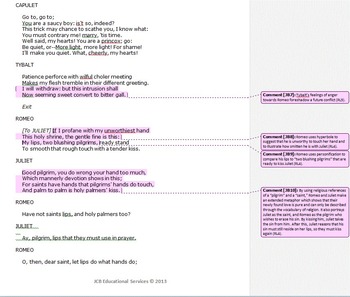

Bits of Shakespeare's The Two Gentlemen of Verona were also thrown in for good measure. In 1744, Theophilus Cibber played Romeo in a version closer to the original that retained some of Otway's additions, such as Juliet waking before Romeo dies. It responded to the crisis over the English throne by placing greater emphasis on the political issues of state within the play. Otway's The History and Fall of Caius Marius set the action in ancient Rome, renaming the lovers Marius and Lavinia. Much greater success was won by Thomas Otway's adaptation in 1679, which was the only version of the play to be seen on stage for about 70 years. The play had a brief run on the London stage immediately after the restoration of Charles II when, in 1662, the actor-manager William Davenant presented it at Lincoln's Inn Fields. Romeo (Timothy Dalton) cradling Juliet's (Estelle Kohler) body, believing her to be dead. Romeo and Juliet (1973), directed by Terry Hands. We know that Peter, the Nurse's comic servant, was played by the popular comedian Will Kemp and the male tragic lead must have been played by the expert wielder of both sword and poetry, Richard Burbage. His gifted boy players took the female roles and Shakespeare must have had great faith in the youth playing the important role of Juliet. Shakespeare wrote his plays with the strengths and talents of his fellow players in mind. No scenery and few props allowed the action to move swiftly and the audience to focus on the language. Shakespeare designed it to be played in daylight on the simple thrust stage of an Elizabethan playhouse, where the rear balcony provided Juliet's bedroom window and a trapdoor in the stage was her tomb.

As the title page of the play's 1597 edition tells us, Romeo and Juliet was a popular success in its day: '.it hath been often (with great applause) plaid publiquely'.


 0 kommentar(er)
0 kommentar(er)
